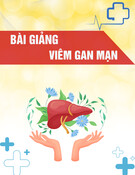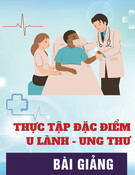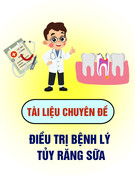Musculoskeletal Care for the General Doctor: Shoulder and Knee Pain
C. Christopher Smith, MD, FACP Associate Professor of Medicine, Harvard Medical School Beth Israel Deaconess Medical Center
Harvard Medical School
Disclosure of Financial Relationships
C. Christopher Smith, MD
Have no relationships with any entity producing, marketing, reselling or distributing health care goods or services consumed by, or used on patients.
Harvard Medical School
The Painful Shoulder and Knee
Recognize, diagnose and treat the most common causes of shoulder and knee pain in the primary care setting
Know how to differentiate among other common causes of shoulder and knee pain
Harvard Medical School
The Painful Shoulder and Knee
Anatomy
History
Differential based on patient’s age, location of pain and other historical elements
Initial treatment
Physical exam maneuvers
Harvard Medical School
Shoulder Pain
Harvard Medical School
A 65-year-old woman with a history of type II DM presents for evaluation of new left shoulder pain. The pain is in her anterior and lateral shoulder and has gradually worsened over the last three weeks. It is dull and constant and keeps her up at night. She also notices marked discomfort when she combs her hair and cannot get clothes from a high shelf due to pain and weakness. She denies any trauma or prior injuries. She works as a shop keeper.
Harvard Medical School
Anatomy of the Shoulder
UpToDate, 2006
Harvard Medical School
Harvard Medical School
The Rotator Cuff Muscles
UpToDate, 2006
Harvard Medical School
Causes of Shoulder Pain
Adhesive Capsulitis
Acromioclavicular Osteoarthritis
Biceps Tendonitis
Brachial Plexus Neuritis
Cervical Radiculopathy
Instability Impingement Syndrome Systemic Inflammatory Disorders Referred Pain - Diaphragmatic, Subdiaphragmatic and Intrathoracic Causes
Glenohumeral Arthritis
Harvard Medical School
In the primary care setting, what is the most common cause of nontraumatic shoulder pain?
A. Bicipital Tendonitis
B.
Impingement Syndrome
C. Adhesive Capsulitis (Frozen Shoulder)
D. Osteoarthritis of the Glenohumeral Joint
E. Acromioclavicular Joint Osteoarthritis
Harvard Medical School
In the primary care setting, what is the most common cause of nontraumatic shoulder pain?
A. Bicipital Tendonitis
B.
Impingement Syndrome
C. Adhesive Capsulitis (Frozen Shoulder)
D. Osteoarthritis of the Glenohumeral Joint
E. Acromioclavicular Joint Osteoarthritis
Harvard Medical School
Causes of Shoulder Pain in the Primary Care Setting:
Impingement Syndrome
> 70%
Adhesive Capsulitis
12%
Bicipital Tendonitis
4%
A/C Joint OA
7%
Other
7%
Smith, J Gen Intern Med, 1992
Harvard Medical School
So what is impingement syndrome?
Harvard Medical School
Impingement Syndrome
UpToDate, 2006
Harvard Medical School
Typical History of Impingement Syndrome
Any age, but risk increases with age
Anterior or lateral shoulder pain
Pain exacerbated by abduction and forward flexion
Night pain common
Harvard Medical School
Age and Shoulder Pain
Young (< 30 y.o.)
• Dislocations/Instability of Glenohumeral Joint • Separation of AC joint • Overuse injury
Less Young (30-60 y.o.)
• Impingement Syndrome • Adhesive Capsulitis (especially in diabetics) • Separation/Overuse as above
Older (> 60 y.o.)
• Impingement Syndrome (non-traumatic tears) • Adhesive Capsulitis • Systemic Conditions (if bilateral, PMR, RA)
Harvard Medical School
Physical Exam
Inspection
Palpation
ROM
Pain active > passive ROM likely soft tissue disorder Pain equal with active and passive ROM likely intra- articular process
• Difference between passive and active
Strength and Sensation
Specific Maneuvers to Confirm Diagnosis
Harvard Medical School
Maneuvers to Verify Impingement Syndrome
Harvard Medical School
Empty Can Test
Maneuvers to Verify Impingement Syndrome
Harvard Medical School
Neer’s Test Neer, Clin Orthop 1983
Treatment
Physical Therapy
• Aimed at improving mechanical dysfunction and
shoulder motion
Reduce offending activities
• Each is better than placebo
• Little long term difference
• No benefit in combination treatment
NSAIDs or Subacromial injection
Harvard Medical School
White, J Rheumatol 1986 Petri Arthritis Rheum 1987
Supraspinatus Tendon Tear
• Positive “Drop-Arm” Test
• Supraspinatus weakness
• External Rotation weakness
• Impingement Signs
• Greater than 60 years old
Murrell, Lancet 2001
Harvard Medical School
Diagnosing Rotator Cuff Tear
# Positive signs* Age
* supraspinatus weakness, weakness in external rotation, positive impingement signs
All 3 Any 2 Any 2 Any 1 Any 1 None Probability of rotator cuff tear 98% 98% 64% 76% 12% 5% Any > 60 < 60 > 70 < 40 Any
Harvard Medical School
Murrell, Lancet 2001
A 55-year-old male with IDDM, HTN and GERD presents with three months of worsening left lateral shoulder pain, which is worse at night. He reports pain with most any movement. Range of motion testing reveals pain and restricted movement in most directions. Symptoms are present with both passive and active movement.
Harvard Medical School
Adhesive Capsulitis or Frozen Shoulder
surrounding the glenohumeral joint
• Thickening and contraction of the capsule
• Insidious onset of pain
• Night pain
• Pain in deltoid, but no tenderness to palpation • Pain and limited active and passive ROM
• Need AP X-ray of glenohumeral joint to rule
• Treatment: Physical Therapy
out glenohumeral arthritis
Harvard Medical School
Adhesive Capsulitis or Frozen Shoulder
• 10% of patients with impingement develop
• Immobility is the most important risk factor
frozen shoulder due to immobility
• Other risk factors:
• Diabetes
• Hypothyroidism
• AVN of glenohumeral head
• Treatment: Physical Therapy
• Chronic Regional Pain Syndrome
Harvard Medical School
Summary
Impingement syndrome most common cause of shoulder pain in the primary care setting Systematic approach to physical exam Range of Motion: pain with abduction, forward flexion; active > passive Empty can and Neer, tests to confirm Drop arm indicates a complete tear - especially in patients > 60 years old
Harvard Medical School
Summary
Adhesive Capsulitis
• DM or Immobile shoulder
• Limited ROM in most planes
• Pain with both active passive ROM
Harvard Medical School
The Painful Knee
Harvard Medical School
A 23-year-old male with no prior orthopedic injuries presents to your clinic one day after injuring his right knee during a game of football. He recounts that the injury occurred when another player fell onto the lateral aspect of his right knee. He was able to continue playing, but with a slight limp. He did not notice a “pop,” or immediate swelling. There is no laxity or “catching.” The pain is on the medial aspect of his right knee, just above the joint line. Exam reveals slight medial swelling, but no ecchymosis. There is tenderness to palpation just superior to the medial joint line and pain with valgus stress, but a solid end point and no laxity.
Harvard Medical School
Causes of Knee Pain
Chronic Knee Pain
Osteoarthritis
Patellofemoral Pain
Rheumatoid Arthritis
Acute Knee Pain MCL/LCL injury ACL/PCL injury Fracture Bursitis Infection
Tumor
•Meniscal Injury
•Osteoarthritis
•ACL
Harvard Medical School
Anatomy
Calmbach, Am Fam Phys 2003 Harvard Medical School
Right Knee
Mechanism of Injury
Calmbach, Am Fam Phys 2003
Right Knee
Harvard Medical School
Physical Examination
Inspect • Gait
• Alignment
• Quad atrophy
• Bruising
• Deformity
Palpation
ROM
Valgus Varus
Harvard Medical School
Physical Examination
Palpation
• Tibial TuberosityPatella • Bursae • Joint lines • Popliteal fossa • Intra/Extra Articular Swelling
Ballotment Milking
Harvard Medical School
Calmbach, Am Fam Phys 2003
Harvard Medical School
Valgus Stress
Varus Stress
Harvard Medical School
A 23-year-old male with no prior orthopedic injuries presents to your clinic one day after injuring his right knee during a game of touch football. He recounts that the injury occurred when another player fell onto the lateral aspect of his right knee. He was able to continue playing, but with a slight limp.
He did not notice a “pop,” or immediate swelling. There is no laxity or “catching.” The pain is on the medial aspect of his right knee, just above the joint line.
Exam reveals slight medial swelling, but no ecchymosis. There is tenderness to palpation just superior to the medial joint line. There is pain with valgus stress, but a solid end point and no laxity.
Harvard Medical School
Medial Collateral Ligament Sprain
“Sprained” Knee Direct trauma to the side opposite the location of pain (valgus stress) If mild, can continue with activity Most commonly involves proximal MCL Pain with valgus stress Most common cause of acute knee “injury” in primary care setting (50%)
Harvard Medical School
Valgus Stress and MCL Strain
First Degree Sprain
• Tenderness along MCL • <5mm laxity but solid end point
Second Degree Sprain
• Laxity at 30° flexion, not in full extension • Solid end point Third Degree Sprain
• Significant laxity at 30°; laxity in full extension
• No solid end point
Harvard Medical School
Treatment of MCL Strain
Rest, Ice, Compression, Elevation and NSAIDs
Grade I and II managed conservatively
Physical Therapy to restore ROM and to regain muscle strength
Brace to protect knee from further injury
• MRI
• Refer to orthopedics
Grade III can also be treated conservatively but would need to rule out other ligamentous injury
Harvard Medical School
A 39-year-old male presents to your office on a wheelchair pushed by his 14-year-old son. This morning while playing football with his son, he stopped suddenly and planted his right knee to turn; his knee gave out and he fell to the ground. He noted a “pop” and immediate pain and swelling in his knee. He had to be helped off the field and reports that his leg feels “unstable.”
Harvard Medical School
Anterior Cruciate Ligament Injury
History of forced hyperextension (clipping), noncontact deceleration or “cutting” or twisting movement—especially with planted foot and valgus stress
Spindler, NEJM 2008 Harvard Medical School
boston.com, accessed 9/08
Harvard Medical School
http://www.boston.com/sports/football/patriots/gallery/09_07_08_brady?pg=2
Anterior Cruciate Ligament Injury
“Pop”
History of forced hyperextension (clipping), noncontact deceleration or “cutting” or twisting movement—especially with planted foot and valgus stress
Reported instability
Unable to continue activity
Rapid effusion
More common in women
Spindler, NEJM 2008 Harvard Medical School
Anterior Drawer Test
Harvard Medical School
Lachman Maneuver
Harvard Medical School
Harvard Medical School
Treatment of ACL Injuries
Treatment depends on severity of injury and level of patient
activities.
Most can perform straight line activities
Consider surgery in patients with complete tear and
• <40 years of age
• High function level for recreation, work, sports
• Associated damage to menisci or collateral ligaments
• Ongoing knee pain, swelling or episodes of laxity
• Able to commit and comply with intensive rehab (6-12 months)
Acute management: improve hemarthrosis and ROM
Without surgery up to 50% develop OA
Harvard Medical School
Meniscal Injuries
Common—especially with osteoarthritis
Either Acute or Chronic Pain
Englund, NEJM 2008
http://commons.wikimedia.org/wiki/File:Gray349.png
Twisting or cutting while weight bearing
Harvard Medical School
Meniscal Injuries
• In OA less likely to have mechanical symptoms
Common (35% of all patients)—especially with osteoarthritis (up to 80% of patients with OA)
Englund, NEJM 2008 Harvard Medical School
Either Acute or Chronic Pain Twisting or cutting while weight bearing Often initially able to continue activity Clicking, catching, locking—esp if tear extends anteriorly beyond the MCL (“bucket-handle tear”) Intermittent pain—usually with rotational movements Delayed effusion
Meniscal Injury
McMurray’s test
Joint line tenderness
Lachman—one third also have ACL injury
Poehling, Clin Sports Med 1990
Duck Walk
Harvard Medical School
Harvard Medical School
Management of Meniscal Injuries
Treatment depends on degree of symptoms and patient’s functional status • Anti-inflammatory medications • PT—straight leg raises to restore strength • Consider orthopedic referral if pain and disability
persist for 2-4 weeks.
Harvard Medical School
Power of Physical Examination
Jackson, Ann Intern Med 2003 Scholten, J Fam Pract 2001 Solomon, JAMA 2001 Liu, J Bone Joint Surg 1995 Rose, Arthroscopy 1996
Given prevalence in primary care setting, likelihood of ligamentous or meniscal tear is <1.5% if exam is negative If exam is positive, post test probability is 50% MRI is slightly more sensitive, but less specific
Harvard Medical School
Other Causes of Acute Pain
Crystal Arthritis Septic Arthritis “Rheumatic” Arthritis IT Band Tendonitis Patellar Femoral Syndrome L5-S1 referred pain Bursitis
• Anserine
• Prepatellar
Harvard Medical School
Summary
Knee pain is a common presentation to primary care providers
There is a wide range of causes of both acute and chronic knee pain
A careful, systematic physical examination is essential to confirm the etiology of knee pain
A detailed history can provide invaluable clues to the diagnosis
Most causes of knee pain can be accurately diagnosed and treated by PCPs
Harvard Medical School
Selected References
Clinical Evaluation of the Knee—Review Article and
Teresa L. Schraeder, M.D., Richard M. Terek, M.D., and C. Christopher Smith,
M.D.
Video
New England Journal of Medicine 2010; 363:E5July 22, 2010
www.nejm.org/doi/full/10.1056/NEJMvcm0803821

















